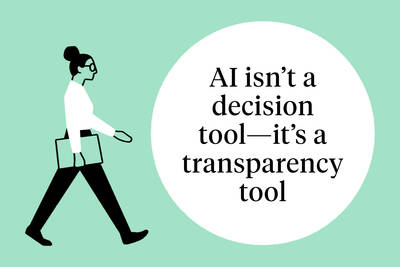Leadership Jan 5, 2015
Leading JC Penney Back to Growth
Three ways retailers can overcome leadership quagmires.

The going has been rough for venerable retailer JC Penney recently, with a succession of CEOs all failing to provide long-term stability and growth. Marvin Ellison’s appointment to the top spot, effective in August 2015, marks the company’s fourth change of leadership in as many years. The stock has slid from over $40 in 2012, bumping along at less than a quarter of that today. There is little sign that the shuffle at the top will recharge the company. What’s the matter with Penney’s?
JC Penney has some things going for it: It is popular in rural areas and with customers over 35. Its pricing strategy deepens customer loyalty through discounting and the use of coupons. It has developed partnerships with upscale clothing and cosmetics retailers and has been able to attract a strong following to its website.
Though it faces the usual market factors—midmarket retail is hollowing out, malls are less popular than they used to be, Amazon has shifted the overall retail environment—Penney’s is not even keeping up with competitors like Kohl’s, which is operating in that same environment.
Paul Hirsch, a professor of management and organizations at the Kellogg School, describes three ways other troubled companies can avoid a similar fate.
1. Know What the Market Values
With more than 100 years in the market, JC Penney has a long history of knowing what its customers want. But as with any large retailer in the age of Amazon, clinging to what has worked in the past is no longer a viable strategy. In trying to reinvent itself, the company has struggled at times to identify and capitalize on what the market values about it.
When Ron Johnson—who developed the “Genius Bar” during his time as head of Apple stores—took over in 2012, he set out to remake JC Penney stores more in line with what Apple had done. This meant no coupons, more space in the stores, and agreements with higher-end brands. The attempt to lure younger, hipper customers to the store shoved aside what made the company unique: discounts.
To retain customers during a revamp, Hirsch stresses the importance of a measured transition from established customer likes to the next big thing. JC Penney’s survival depends as much on being able to decide what about its business is worth keeping as which innovations to implement. Hirsch describes this shift in emphasis as developing a philosophy where leaders say, “We want to keep what is still working well and modernize it, rather than throw out all that we did before and replace it.”
For this shift to work, timing and organizational coordination are key. “Make sure the implementation of ideas comes when the ideas are ready and when people are on board,” Hirsch says. Under Johnson, Penney’s was advertising for new products that had not even been rolled out into stores yet—“so they had some issues getting that part right.”
2. Overhaul without Alienating
“Johnson thought he could sell Penney’s retail clothing the way you sell an iPhone,” Hirsch says—that is, by making it seem hip. “Which was a mistake. Penney’s merchandise was not unique and Johnson was not another Steve Jobs.”
In the process, Johnson’s style clashed not just with the desires of JC Penney’s customers, but also with the culture of the organization. He tried to change a lot of things at once—some of which were working well for the company. If employees disagreed they were asked to leave, sometimes brutally.
“Respecting their history is actually a good way to bring people around.”
“In terms of the internal groups in the company, if you basically attack what their legacy is, you’re going to alienate more people than you need to,” Hirsch says. “Respecting their history is actually a good way to bring people around.”
Johnson’s tenure holds cautionary tales for executives taking over in the wake of ineffectual leaders. A new CEO in these circumstances is going to have to get out in the stores and listen and take ideas, Hirsch says. “This includes paying attention to the people on the boundaries of the organization, not just those who are repeating what they think you want to hear.”
The new CEO should align managers who are already respected within the company into coalitions in support of change, rather than parachuting in with a group of strangers to order employees into unfamiliar territory.
Acknowledging that any overhaul is likely to come with reductions in the workforce, a new CEO will have to stay sensitive to the overall culture of the organization. The way downsizing happens requires a deft touch, Hirsch notes, because the other employees are watching.
3. Beware Activist Investors
One element of the upheaval at Penney’s has been the intrusion of activist investors—in the form of Bill Ackman from the hedge fund Pershing Square and Steven Roth of Vornado Real Estate. The two worked their way onto the JC Penney board, helped get Johnson brought in as CEO, and started pushing for radical change at the company.
Activist investors can be advantageous for a company, especially one that has high potential but has struggled to take advantage of it. But these investors have a reputation for wanting change to come quickly and for pushing share prices to rise in the short term. Focusing on stock price by downsizing or selling off real estate may not be in the long-term interest of the company.
Hirsch recommends company leaders anticipate the changes activist investors would impose and start implementing them—but in a more measured way, in order to proactively defang these investors.
“If you meet them in the middle, you keep them off your board,” Hirsch says. “It’s not that you’re doing things they don’t want done. It’s that you’re doing things less radically. This makes you less likely to be a target of activist investors who just want to see the stock price go up. If you leave them low-hanging fruit, they’ll take it.”


